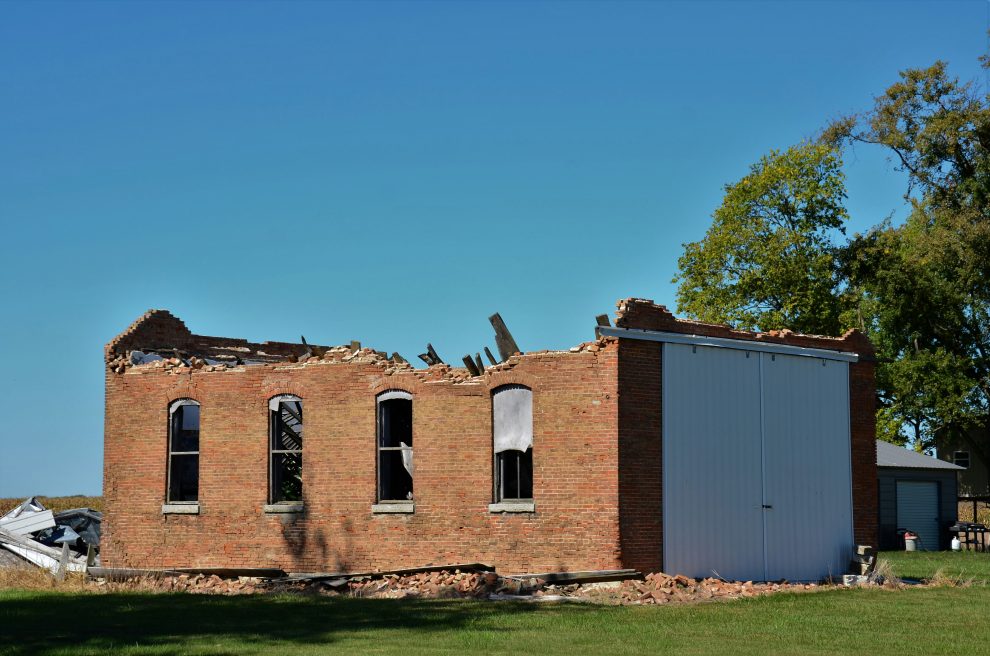Every summer, Florida braces for storm season. For owners and operators of large industrial and commercial real estate, that doesn’t just mean boarding up windows or securing loose items. It means preparing for the complex, costly aftermath of wind, water and structural damage and, critically, the insurance claims that follow.
Last year alone, natural catastrophes drove nearly $50 billion in insured losses in the United States, according to Swiss Re, with Hurricanes Helene and Milton accounting for the most. When a single storm can erase years of NOI, coverage is non-negotiable, and so is the proof that turns a policy into a payout.
But here’s the thing: proving storm damage is rarely straightforward.
Insurers always ask the same questions: What damage was pre-existing? What was wear and tear? What, exactly, was caused by the storm? If the owner’s answers to these queries rely on walk-through photos and gut feel, they can enter negotiations at a severe disadvantage.
In Florida, “inadequate documentation” has been explicitly cited by law fi rm Herman & Wells as the No. One reason for commercial insurance claim denial. When it comes to commercial roof warranty claims, for example, over 60% are denied due to insufficient evidence, leaving owners to absorb the full cost of repairs, said a report from We Coat Commercial Roofing.
Without clear, timestamped evidence of pre-storm conditions, owners risk delays, lowball settlements or outright denials. Miss a crack in the parking lot or a seam on the roof and the adjuster may call it pre-existing. Multiply that by dozens of sites and the math becomes painful.
That’s why the smartest operators treat pre-storm inspections as seriously as they do sandbags or backup power, because the clearer your evidence, the faster your recovery.
Capturing the “Before” That Protects You
Traditionally, capturing evidence has meant dispatching inspectors to walk each facility, photograph problem areas and write up condition reports. But if you’re managing 50 warehouses or a national retail footprint, manual inspections alone won’t cut it. They’re slow, inconsistent and impossible to scale, especially when storm warnings give you just days to prepare.
This is where technology is changing the game.
IoT-based flood and water sensors installed in basements, utility rooms or around low-lying assets can detect early signs of fl ooding or leaks, as a result of storms. These sensors not only transmit real-time alerts to property managers, allowing rapid response, but also provide data-backed evidence of water damage for insurance claims.
Digital twins are another important technology. These create a virtual model of a building or facility, aggregating real-time and historical data (from sensors, imagery, maintenance logs) to simulate how a facility might perform in different storm scenarios. This helps to visualize risk scenarios and model how certain failures might cascade, again providing a layer of evidence for storm-attributed damage.
But scenario modeling and internal evidence must be combined with external evidence.
At Site, we use drones to capture high-resolution imagery of a property or an entire commercial portfolio, for full visibility of exterior assets like parking lots, sidewalks, roofs, façades and landscaping. The goal is to document the existing condition of each site in detail before storm season hits, creating a verifiable baseline.
Once the images are collected, our proprietary AI analyzes surfaces like pavement and concrete for defects, tracks changes over time and counts inventory across key exterior elements, including ADA parking, light poles, bollards and signage. Meanwhile, expert-backed roof assessments are performed by our team, to build condition reports, pre- and post-storm.
All findings are consolidated into a centralized platform to give owners and operators one-click access to defensible, timestamped reports across their portfolio — with interactive orthomosaics, defect maps, item counts and exportable claim packets.
That level of detail really matters when you need to prove a flood took out five lights, not three, or that your roof was in great condition 24 hours before the storm. It really matters when there are thousands of dollars on the line.
Storm season is inevitable, but insurance disputes don’t have to be.
Real estate technologies like ours are transforming uncertainty into clear, actionable data. When the storms die down and the claims begin, the owners who come out ahead won’t be those caught scrambling. Instead, they’ll be the ones who can quickly prove exactly what happened and get back to business, while others are still tangled in disputes over incomplete evidence.
In Florida’s storm season playbook, solid proof isn’t just an advantage, it’s essential. With the right tools, property owners can face each storm with confidence, knowing they’re prepared for whatever comes next.
Austin Rabine
Co-founder and CEO
Site Technologies
625 West Adams St., 19th Floor
Chicago, IL 60661
(312)768-8250




















